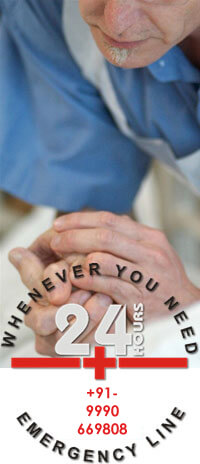Learn CPR in New Delhi
CPR Facts & Statistics
About 80 percent of all out-of-hospital cardiac arrests occur in private residential settings, so being trained to perform cardiopulmonary resuscitation (CPR) can mean the difference between life and death for a loved one.Effective bystander CPR, provided immediately after cardiac arrest, can double a victim's chance of survival.
CPR helps maintain vital blood flow to the heart and brain and increases the amount of time that an electric shock from a defibrillator can be effective.
Death from sudden cardiac arrest is not inevitable. If more people knew CPR, more lives could be saved.
Brain death starts to occur four to six minutes after someone experiences cardiac arrest if no CPR and defibrillation occurs during that time.
If bystander CPR is not provided, a sudden cardiac arrest victim's chances of survival fall 7 percent to 10 percent for every minute of delay until defibrillation. Few attempts at resuscitation are successful if CPR and defibrillation are not provided within minutes of collapse.
Coronary heart disease accounts for about 446,000 of the over 864,000 adults who die each year as a result of cardiovascular disease.
There are 294,851 emergency medical services treated out of hospital cardiac arrests annually in the United States.
There are about 138,000 coronary heart disease deaths within one hour of symptom onset each year in the United States.
Sudden cardiac arrest is most often caused by an abnormal heart rhythm called ventricular fibrillation (VF). Cardiac arrest can also occur after the onset of a heart attack or as a result of electrocution or near-drowning.
When sudden cardiac arrest occurs, the victim collapses, becomes unresponsive to gentle shaking, stops normal breathing and after two rescue breaths, still isn't breathing normally, coughing or moving.
The Importance of CPR Classes
Even if your employer hasn't mentioned anything about taking CPR courses, you can still check on your own to see what is available. Knowing how to perform CPR, whether you are at work or at home may mean the difference between life or death for you or a loved one. Additionally, possessing the knowledge of how to perform CPR can help you to stay calm and make wiser decisions during an medical emergency situation, not to mention give you added confidence. If you are unsure where to register for a CPR class, start with your local community college, as many of them offer CPR courses periodically. You can also check at your local supermarket or in your local newspaper.


































